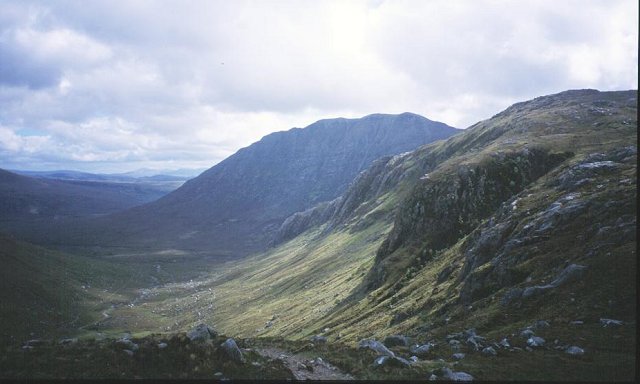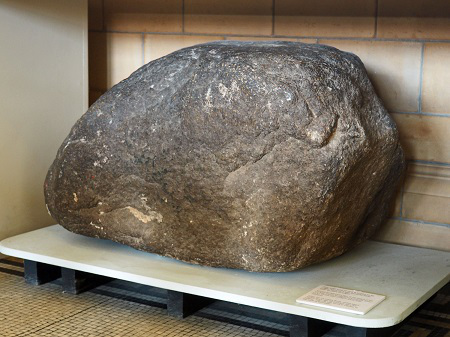An Ice Age legacy
- 16th November 2018
The cold and ice of the last glacial reached its worst about 21,000 years ago. Since then the earth has become warmer, allowing humans to return to Britain 15,000 years ago across Doggerland, the area now covered by the North Sea. But the impact of the Ice Age remains all around us.
Today, about 10% of the earth is covered in ice, mainly at the north and south poles or at great heights such as in the Himalayas or the Alps. The last of the glaciers disappeared from the Highlands of Scotland around 10,000 years ago, but they changed Britain forever. These large masses of ice had covered the landscape, reshaping it as they slowly advanced and retreated.

The work of glaciers in the Scottish Highlands (Richard Webb | Hanging Valley | CC-BY-SA 2.0)
Glaciers are not static, they move very slowly, under the weight of ice, growing and shrinking with climate changes. In areas like Britain that have been covered in glaciers, their presence can still be seen in the landscape where glaciers and ice have cracked and plucked up rocks as they thawed and froze, expanded and contracted, carving out the landscape in their path as they slowly moved. Glaciated valleys are probably the most obvious glacial landform; trough-shaped, often with steep sides, carved out by glaciers.
Erosion is not the only impact of glaciers. As the ice started to melt or retreat it left behind the rocks and sediment it had been carrying. The material that was at the bottom of the glacier was left behind on the valley floor as the ice melted, rocks were dumped at its sides and further material left piled up at its snout. Erratics, large boulders moved by the melting ice, are amongst the most impressive rocks left behind. They often look out of place because they have been transported over large areas.

The rock that rolled – one of the erratics on display in Worcester City Museum & Art Gallery
Once glaciers have retreated, the ground they covered is released from the enormous pressure of metres of ice, causing it to slowly rise up. As with most geological events, this is a slow process. Today, the geology of Scotland is still rising by a few centimetres a year, whilst the landmass of England and Wales slowly tips down towards the sea, rebalancing now the weight of ice has gone.
Alongside melting glaciers, the end of the last glacial brought about changes in vegetation and habitats. The warming world had a terrible effect on the habitat of Ice Age animals, and the human hunters who were able to return to Britain had a hand in finishing off their shrinking populations. The end of the mammoths was not the end of the Ice Age though: we’re still living in a warm interglacial. Scientists disagree about how long it is likely to be until the earth again turns cold or how ferocious the freeze will be, but most agree it will happen. It may take thousands of years for the earth to freeze or little more than a decade.
Against the backdrop of these massive changes in climate is a new type of climate change caused by humankind. Increasing global temperatures, changes in drought and flooding patterns and the dramatic pace of melting ice caps are impacting on a new generation of animals at risk of extinction. The impacts of a changing climate live long. Our species will have to show as much ingenuity in our future as we did in our past.
Post a Comment